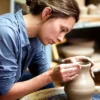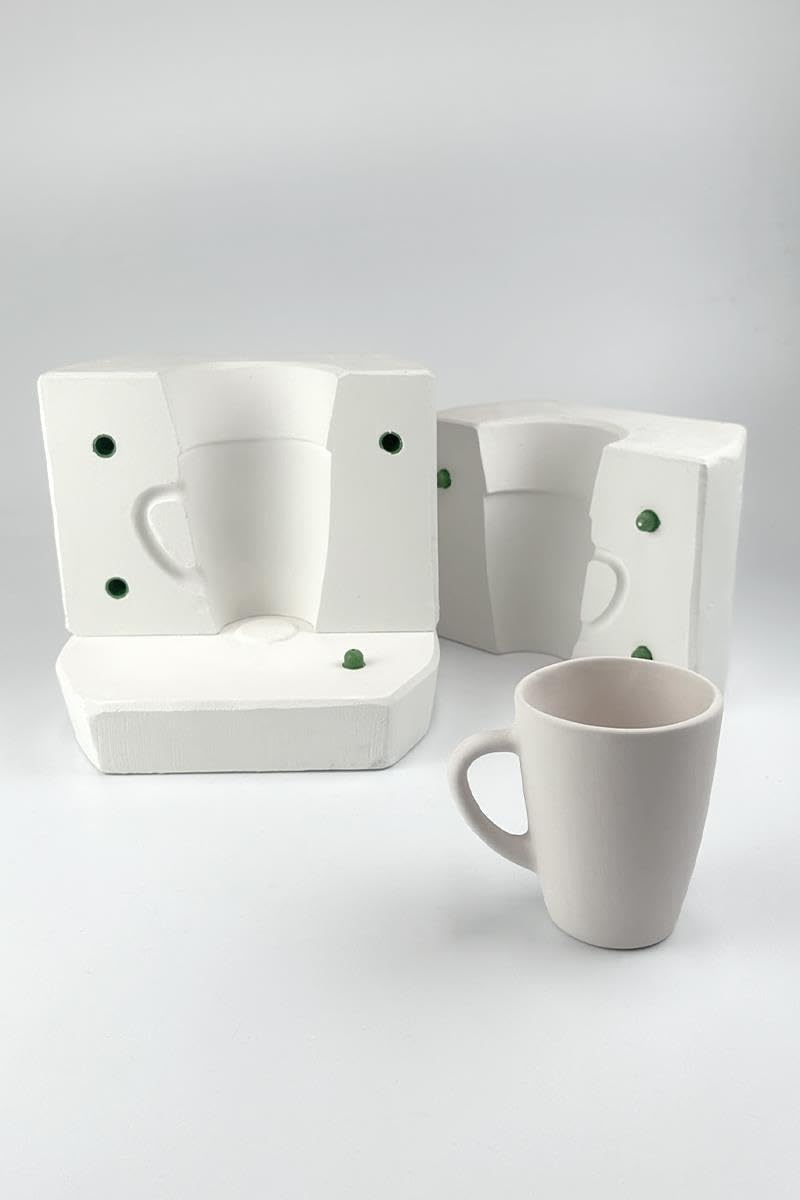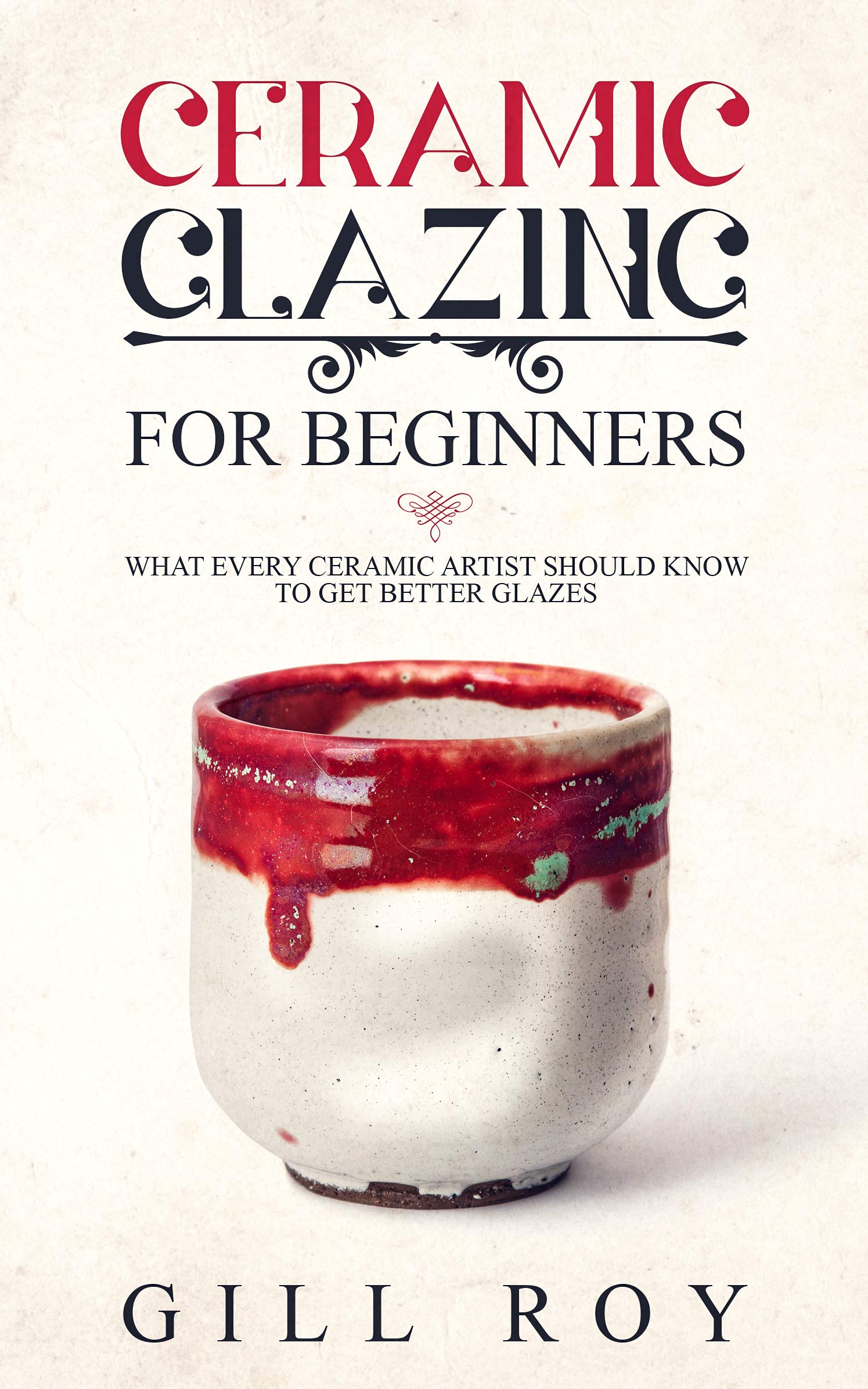Pottery is an ancient craft that holds a special place in art and culture, known for its functionality and beauty.
It’s evolved over thousands of years, embracing a variety of techniques to shape and form clay, one of which is slip casting.
Slip casting is a pottery technique that uses liquid clay poured into molds, allowing for the creation of intricate and uniform shapes that might be challenging to achieve by hand.
The method’s precision makes it a favorite among hobbyists and professionals who produce both functional pieces and artistic creations.
One of the key considerations when diving into slip casting is the preparation of the slip itself.
The right consistency can make a significant difference in the final product.
Molds, typically made from plaster, are another critical element.
They affect the moisture absorption rate, which can influence the drying and final results.
Selecting quality molds and understanding their impact on the slip-casting process is crucial.
Other factors like the size and weight of the mold, ease of use, and the type of clay used are also important to consider.
We evaluated numerous slip casting techniques and products to highlight the best practices and tools available to artists and enthusiasts.
Our insights are designed to guide you through making informed choices and creating high-quality pottery with ease.
Best Slip Casting Techniques for Pottery
We’ve put together a comprehensive list of the best slip casting techniques for pottery that can help improve your ceramic creations.
Our selection covers a range of methods suitable for different skill levels and artistic goals.
Let’s explore the options that stand out in the world of slip casting.
Essential Guide to Slip Casting
A valuable resource for beginners and seasoned potters alike, providing clear instructions and impressive visuals.
- Comprehensive approach to mold making.
- High-quality color photos.
- Easy-to-follow instructions.
- Heavy and bulky.
- Limited to illustrative examples.
- High price point.
While using “The Essential Guide to Mold Making & Slip Casting,” we found the instructions to be outstandingly clear, which makes it a fantastic guide for anyone diving into the techniques of slip casting.
The book’s visuals are incredibly detailed, featuring high-quality images that complement the text beautifully.
The layout is logically organized, allowing us to easily follow along and try out new methods.
It particularly excels in breaking down complex processes into manageable steps.
For those new to ceramics, the author’s approach provides a solid foundation to start your creative journey.
We did notice that the book is quite weighty and not the easiest to tote around.
Additionally, while the examples are helpful, they can be somewhat restrictive when looking to develop unique projects.
Despite these drawbacks, the guide remains a worthwhile investment for the depth of information it provides.
Complete Pottery Techniques
This book is a must-have addition for anyone passionate about pottery, offering a wealth of techniques and insights that cater to all levels of expertise.
- Includes a diverse range of pottery techniques
- Step-by-step instructions make learning easy
- High-quality photography enhances comprehension
- Might feel bulky for some users
- Focuses heavily on visual elements
- Limited to hardcover only
Reading “Complete Pottery Techniques” was an enriching experience.
We appreciated how the book expands on various pottery methods, complemented by stunning photographs that truly bring the concepts to life.
The detailed instructions simplify complex techniques, making them accessible for artists at different skill levels.
This aspect enables us to experiment confidently with forms and designs that we might have otherwise found daunting.
While the hardcover format adds a sense of quality and substance, it can feel a bit cumbersome during casual reading sessions.
Nonetheless, the wealth of information enclosed makes it a worthy addition to any pottery enthusiast’s collection.
REFSAN Rio Mug Mold
This mold is a solid choice for both ceramic and porcelain slip casting with a straightforward process.
- Durable construction supports around 100 castings.
- Compatible with both ceramic and porcelain clays.
- Allows for multiple castings per day depending on weather.
- Requires preparation of slip a day in advance.
- Some shrinkage in the slip is possible.
- Plaster mold’s edges may be prone to damage.
The REFSAN Rio Mug Mold is an excellent option for those of us keen on diving into slip casting.
It’s crafted to accommodate both ceramic and porcelain clays and maintains durability over a sizable number of castings.
We found that with careful preparation, the finished pieces come out smooth and consistent.
The mold’s larger size facilitates various casting possibilities, providing a versatile experience.
Yet, it’s vital to ensure that the slip is well-prepared ahead of time.
This preparation, though taking up some time, ensures that every casting is of great quality.
While the edges of the mold could be fragile, this doesn’t hinder the overall casting outcomes.
We must emphasize the need to maintain a clean and smooth internal mold surface to achieve the best results.
It’s a valuable tool for our pottery projects.
REFSAN Wineglass Plaster Mold
This mold is an excellent choice for pottery enthusiasts who want to explore slip casting with ceramic or porcelain clay.
- Durable and can last for up to 100 castings
- Creates smooth ceramic or porcelain products
- Compatible with both ceramic and porcelain clays
- Requires pre-preparation of casting slip
- Only suitable for specific mold dimensions
- Limited to a few castings per day based on weather
Having used the REFSAN Wineglass Plaster Mold recently, we’ve found it to be a robust tool for creating beautiful, detailed pottery items.
The mold is composed of three parts, allowing for ease in handling and assembling.
Its durability stands out, especially since it can withstand up to 100 castings.
There are a few steps to observe during the preparation, such as thoroughly mixing the slip and ensuring the use of sodium silicate.
This preparation is key to achieving smoother finishes.
There’s a requirement to fill the mold to the rim slowly, which aids in receiving the finest details on the final product.
Weather conditions can influence the drying time, but on a good day, we managed to achieve multiple casts.
For anyone committed to producing quality ceramic pieces, this mold is undoubtedly a valuable investment in exploring slip casting techniques.
Ceramic Glazing for Beginners
This resource might be convenient for beginners looking to briefly explore ceramic glazing, but it lacks in-depth details and illustrations which can be limiting.
- Offers basic insights suitable for beginners.
- Convenient for e-readers with its enabled formatting features.
- Compact size makes it easy to browse quickly.
- Lack of illustrations reduces practical understanding.
- Limited details on crucial aspects like safety and chemical interactions.
- Durability issues with the physical print version.
Using this guide, we navigated through some elementary concepts of ceramic glazing.
Though it’s fairly compact at 78 pages, the book’s streamlined format is great for a quick read on the go.
The e-reader compatibility with features like text-to-speech and screen reader support is indeed a plus, but the absence of visual guides was a notable disadvantage during hands-on tasks.
Several of our team members pointed out the lack of depth in some areas, especially since important considerations such as the interaction of oxides and chemicals were scarcely covered.
This omission makes the work feel incomplete, particularly for those of us seeking a more extensive understanding.
Overall, while this book offers a basic introduction perfect for absolute beginners, it fell short in providing the robust, detailed guidance we anticipated.
The small size raised practical usage concerns, particularly with the physical copy, yet its digital format may serve as a quick reference for some.
Buying Guide
When selecting materials for slip casting, it’s vital to evaluate certain features.
Porcelain slip offers fine texture, while earthenware slip provides a more rustic finish.
We must consider the intended outcome of our pottery project when making this choice.
Viscosity plays a crucial role in slip casting.
A slip that’s too thick may not fill the mold completely, while one that’s too thin can lead to fragile pieces.
We should aim for a consistency similar to heavy cream.
This ensures ease of casting and a high-quality result.
Another aspect is the drying rate.
A fast-drying slip can lead to cracks, while a slow-drying one might delay the production process.
It’s crucial to find a balance that suits our workflow without compromising on quality.
The documentation provided with our slip can offer insight into these properties. Ingredient lists reveal crucial components, allowing us to assess the slip’s qualities.
Choosing the right mold material affects our results significantly.
Plaster molds are popular for their absorption properties, which aid in drying.
With careful handling, they can be reused multiple times.
Here’s a quick checklist for slip casting essentials:
| Feature | Importance |
|---|---|
| Slip Composition | Texture, color, finish |
| Viscosity | Ease of casting |
| Drying Rate | Production efficiency |
| Mold Material | Reuse potential |
Taking these factors into account ensures that we are well-equipped to achieve the best outcomes in our pottery endeavors.
Frequently Asked Questions
We address specific concerns about slip thickness, air bubble prevention, clay type, drying practices, and slip recycling techniques.
Each query is carefully answered with clarity and precision.
What is the ideal thickness for slip when casting pottery?
For optimal results, our slip should ideally have the consistency of heavy cream.
This thickness ensures a smooth pour while providing enough strength to maintain the shape of your cast.
A consistent viscosity helps achieve uniformity and better precision in detailed designs.
It’s important to test and adjust based on the specific clay mixture and desired outcome.
How can you avoid air bubbles during the slip casting process?
Air bubbles can compromise the integrity of our pottery.
To minimize them, we recommend thoroughly mixing the slip and allowing it to sit, releasing trapped air.
Pouring slowly and consistently also helps.
Using a vibrating table during the process can further reduce bubble formation, promoting a smoother finish.
What are some common slip casting defects and how can they be prevented?
Defects such as cracking, warping, and uneven thickness can arise.
To prevent these, we ensure consistent slip thickness and control temperatures during drying.
It’s crucial to select the right mold materials and maintain a clean workspace.
Addressing these factors reduces common defects and leads to higher-quality outcomes.
How does the type of clay affect the outcome of slip casting?
Different clays impact the final result.
Porcelain provides a smooth, fine finish, while stoneware offers durability.
Earthenware is more porous and requires glazing for watertightness.
Each clay type demands specific adjustments in slip preparation and drying times, influencing the texture, strength, and color of our final pieces.
What are the best practices for drying slip-casted pieces to prevent warping?
To avoid warping, we recommend even and gradual drying.
Keeping pieces covered with plastic slows down moisture loss.
It’s vital to ensure that pieces dry evenly by turning them regularly and maintaining consistent ambient conditions.
A controlled drying environment ensures uniform drying, reducing the risk of distortion.
Can you recycle slip from a failed casting, and if so, how?
Recycling slip is feasible and eco-friendly.
We reclaim it by drying out the excess moisture, then re-mixing and sieving to remove impurities.
Once the desired consistency is achieved again, the slip is ready for reuse.
Properly recycled slip can often match the quality of newly prepared batches, saving resources.







